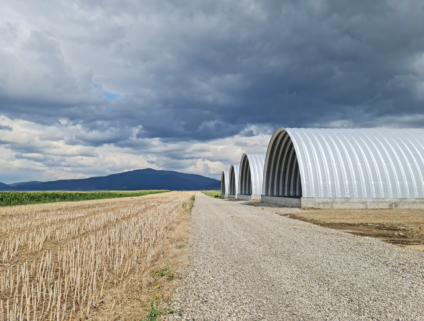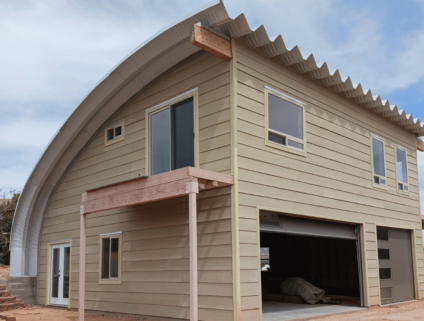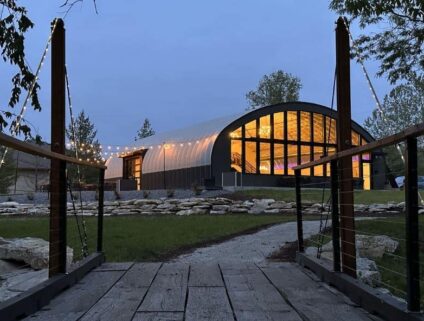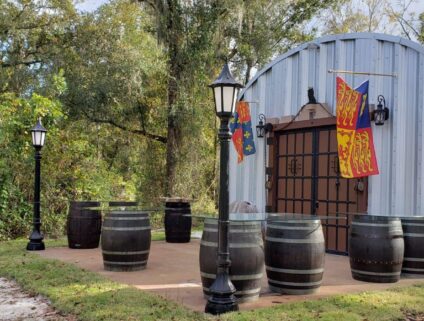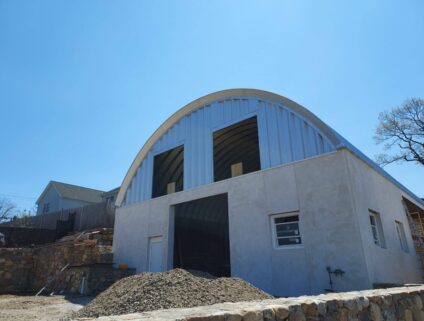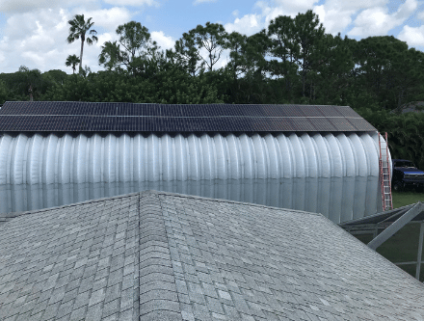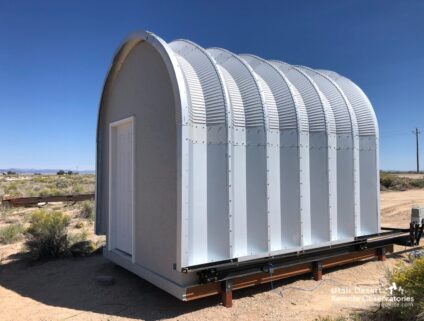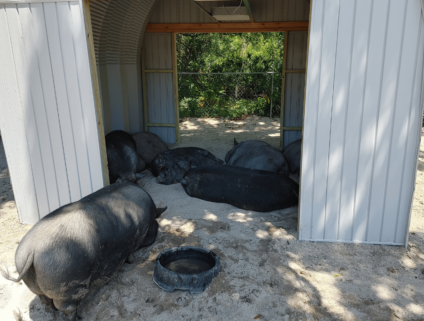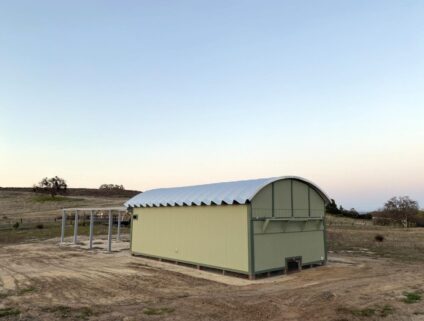Sloss Furnaces: An Architectural Marvel with a Haunted History
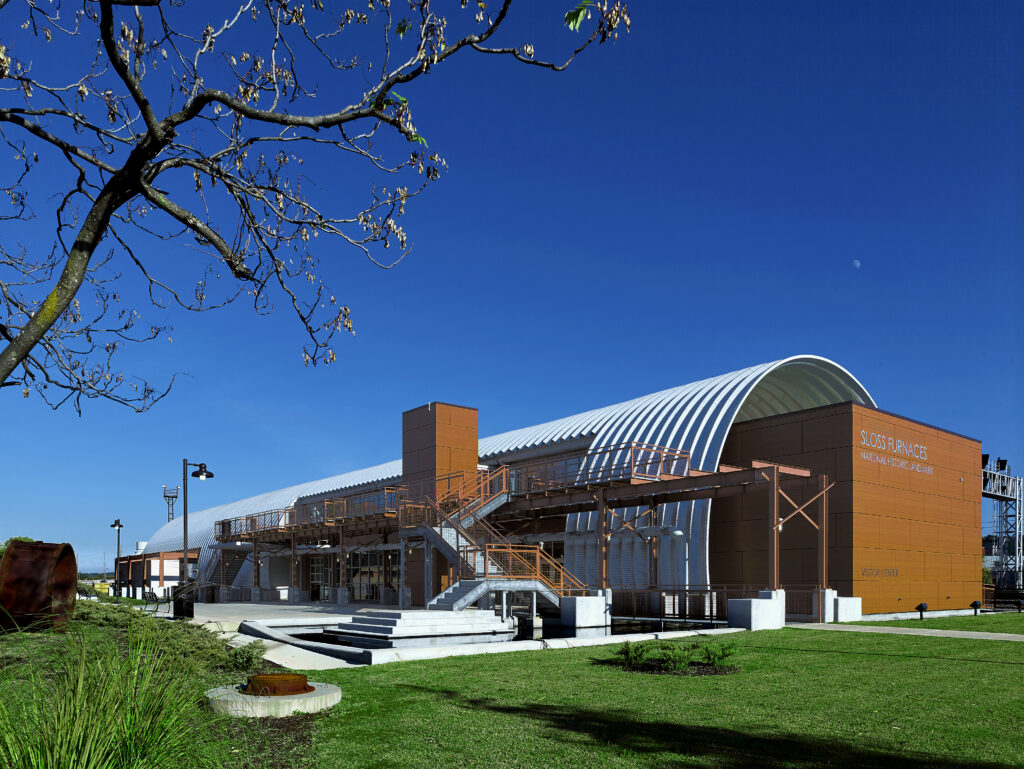
Sloss Furnaces Nat’l Landmark: Building To Preserve American Iron & Steel Works History
SteelMaster, as our name implies, produces quality steel for the US and around the globe. So when we had a chance to work with the team at Sloss Furnaces National Landmark to help preserve their 88-year history of metal works in Birmingham and the greater southern United States we jumped at the chance.
There were several challenges after funding was approved to build a new Sloss Furnaces Visitor Center & Museum to welcome people to the National Landmark. One of the biggest–How do you design a new building with modern amenities that pays homage to the iron and steel industry’s legacy while not detracting from the surrounding historic buildings?
Unique Building For A Unique National Landmark
With a $5.7 million budget and a goal of 16,000 total square feet of space to house $4 million of exhibitions and furnishings, it was a huge challenge to undertake.
Architects and engineers of the team behind the building came to SteelMaster with a design that blended in with the rest of the landmark with red brick but also caught the eye and emphasized the strength of steel that helped build the city of Birmingham by including a steel arch cascading down the side of the building and surrounding stairs and outdoor space.
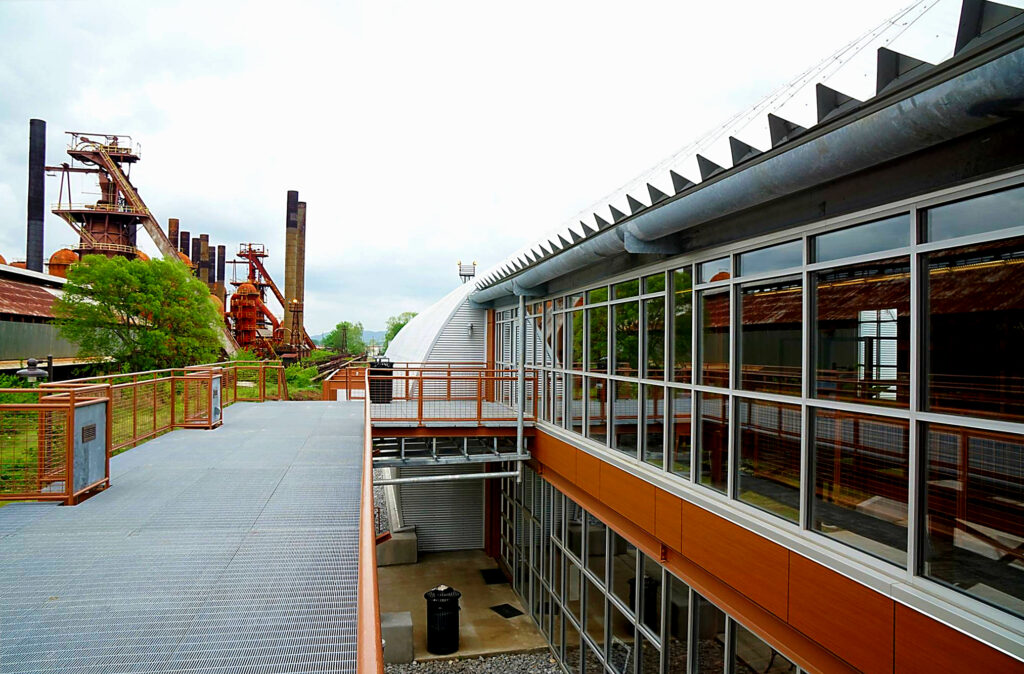
It was a beautiful design that had everyone’s approval but the problem was that they needed a steel arch that went beyond 180 degrees to complete the look.
Most steel arched roofs, like the arches of a Quonset hut, are essentially a half circle with a max of 180 degrees. SteelMaster worked with our in-house experts, engineers at our factory and the Sloss Furnaces team to specially design arches that went beyond the standard 180 degrees and remained structurally sound.
The steel arches added to the Visitor Center are one of only a few steel arch systems in the world that curve more than a half circle forming a more cylindrical shape.
Why Birmingham Fought To Keep Sloss Furnaces
The history of Birmingham is directly shaped by the Sloss Furnaces so after closing its doors in 1971, Sloss Furnaces became one of the first industrial sites in the U.S. to be preserved for public use because the people of Birmingham recognized its importance.
It was designated a National Historic Landmark in 1981, symbolizing Birmingham’s industrial heritage and serving as an educational museum and cultural center.
For locals, Sloss Furnaces represents a connection to the past and how the city got to where it is today. People visiting the museum can learn about Birmingham through the scope of its industrial development.
The National Monument highlights some key aspects for visitors:
- Founding and Early Growth – Birmingham is close to abundant amounts of coal, iron ore, and limestone deposits. The city’s centrality to these resources made it an obvious choice for industrialists like Colonel James Withers Sloss who established the Sloss Furnace Company in 1881. The establishment of this company coincided with a city-wide industrial boom, with Sloss capitalizing greatly on the economic opportunities of Birmingham.
- Economic Impact – Sloss Furnaces quickly became a major producer of pig iron, contributing significantly to Birmingham’s rapid economic growth. In its first year of operation alone, the facility produced 24,000 tons of high-quality iron. Along with other developing industries, this created thousands of jobs for the area and helped fuel the city’s growth.
- Industrial Innovation – Under various ownerships, Sloss Furnaces continually modernized and expanded its operations. James Pickering Dovel, who became superintendent in 1909, introduced numerous innovations, earning Sloss a national reputation for industrial ingenuity. Sloss Furnaces is in the Alabama Engineering Hall of Fame, recognized for this innovation and industrial output.
- Birmingham’s Industrial Identity: Sloss Furnaces, along with other iron and steel producers, helped establish Birmingham as the leading iron and steel-making center in the South, competing with major Northern industrial cities and becoming a cultural and commercial hub for the state of Alabama in just a few decades
Preserving The Good, Bad & Spooky History Of Sloss
Folks have reported all kinds of spooky happenings around Sloss Furnaces that would make even a thrill seeker’s skin crawl.
Some say they have heard voices, the sound of footsteps, the clanging of heavy metal chains against the furnaces, rapidly dropping temperatures around certain areas, and some say they’ve seen shadowy or glowing figures following them in the dark. A few have even reported gentle pushing or shoving by an unknown force!
There’s an interesting story surrounding the haunted history of Sloss Furnaces. Many believe the shadowy figures are the spiritual remains of the men who once worked in the factory in the early days. The conditions for workers during that time were deplorable, and many laborers met their deaths on this site.
These experiences have attracted ghost hunters from all over the country. Several crews have set up equipment inside of Sloss and some claim to have recorded some of the mysterious figures and unexplained sounds.
Sloss first opened back in 1882 and it was a beacon of hope for those chasing the American Dream. It was once called the Magic City because of how it quickly turned around the economy of Birmingham.
Hopeful immigrants flocked to the city expecting to find that gold-paved road to success, but instead, they became trapped in a smoke-filled, extremely dangerous dead-end job where many met their deaths and others were severely injured.
In the summer, the furnace could get up to 150 degrees, but the men were not allowed many breaks during their 12-hour shifts. The men were exposed to hazardous breathing conditions, and this was the perfect recipe for deadly accidents.
According to legend, there’s one particular time in Sloss’ history when nearly 50 workers died in horrific accidents under the reign of a man they call “Slag.” Although there’s a dispute about his existence, “Slag” is known as James Robert Wormwood. They say he was a tyrannical foreman who was brought onboard in 1903.
He was in charge of the graveyard shift and he was abusive to the workers. The legend says Slag forced his men to speed up production to impress the bosses and forced them to take dangerous risks. They say more men died under Slag than any other foreman in their history.
Some say the workers grew tired of Slag and his oppressive ways, and they conspired to kill him. Slag fell to his death from the highest glass furnace and into a huge mixture of hot molten iron. Now many people have reported hearing or seeing Slag hanging around the furnaces at night.
Sloss Furnace National Historic Landmark Today
Tourists from all over the United States and beyond come to visit for the history and culture while the surrounding community enjoys public and private events geared to all ages at Sloss Furnaces Visitor Center and Museum.
All of these visitors first come in through the Visitor Center with its unique steel roof pouring over the side of the building to act as a reminder of the metal works that helped shape a nation. As a National Historic Landmark, Sloss Furnaces also focuses efforts on educational opportunities:
- School field trips
- Classroom and educational outreach
- Public guided tours
- Self-guided tours
- Group guided tours
- Historical Night
- Virtual tours
Check out the Sloss Furnaces National Historic Landmark website for more on its history, events, and education efforts.
Categories

